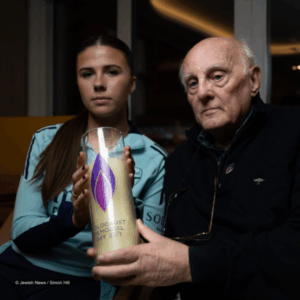Bridging Generations: Theme for 2026
The theme for Holocaust Memorial Day (HMD) 2026, 'Bridging Generations', is a call-to-action. A reminder that the responsibility of remembrance doesn't end with the survivors - it lives on through their children, their grandchildren and through all of us. This theme encourages us all to engage actively with the past - to listen, to learn and to carry those lessons forward. By doing so, we build a bridge between memory and action, between history and hope for the future.
 As the years pass, we’re growing more distant in time from the Holocaust and from the other, more recent genocides that are commemorated on HMD. That distance brings a risk – memory fades and the sharp reality of what happened becomes blurred, abstract or even questioned.
As the years pass, we’re growing more distant in time from the Holocaust and from the other, more recent genocides that are commemorated on HMD. That distance brings a risk – memory fades and the sharp reality of what happened becomes blurred, abstract or even questioned.
Bridging Generations highlights the crucial role of the next generation in preserving the memory of the Holocaust and carrying it forward. It highlights the power of intergenerational dialogue – of listening to those who came before us and of sharing those stories with those who come after. In doing so, we don’t just preserve memory – we connect it to the present.
Genocide doesn’t discriminate by age: infants, children, adults and the elderly have all experienced unimaginable suffering in different ways. In many cases, entire family lines were erased. Bridging Generations invites us to honour each life – and honour those who left no family to carry their legacy – whose legacies live on not through bloodlines but through books, films and other interpretations.